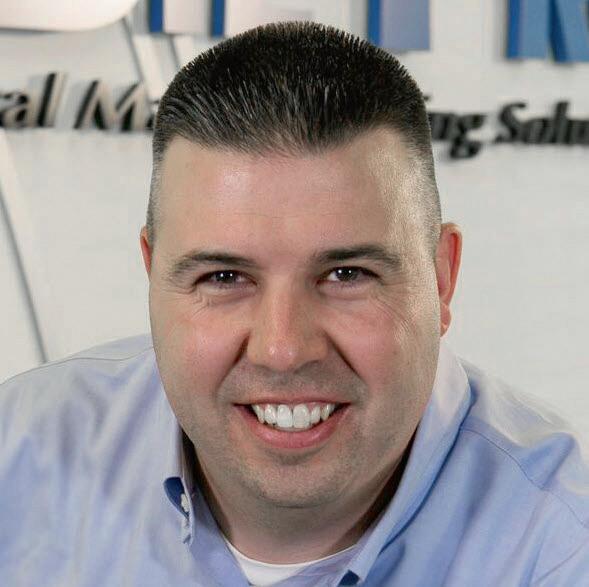
5 minute read
Sustainability Prioritize, manage, reduce
from MPN NA Issue 19
by MPN Magazine
HOLLY GAMAGE, SENIOR DIRECTOR OF CLEAN EARTH’S FULLCIRCLE BUSINESS ADVISES HOW MEDICAL PLASTICS COMPANIES CAN BECOME MORE SUSTAINABLE AND IMPROVE BRAND PROTECTION.
Prioritize, manage, and reduce
Consumers are prioritizing sustainability when considering their purchase choices now more than ever, according to a recent survey that highlights how the pandemic has shifted consumer decisions to be more environmentally driven.1 Another recent consumer study revealed 70% think it is important for a brand to be ecofriendly.2 Similarly, medical plastics companies are looking for ways to reduce and recycle materials as much as possible.
Waste reduction can mean reducing large quantities of waste at the source, meaning focusing on the initial production and design and selection of materials. Leading consumer goods manufacturers are honing in on the types of materials, such as plastics, that go into making the bottle or container that holds the goods consumers buy. By evaluating the design of historical packaging, which includes looking into the types of plastic used for the lid, bottle, pump, and so on, medical plastic manufacturers can best identify how to design products that align with sustainability goals.
Medical plastics companies should prioritize recycling and reusing plastics and other nonviable, or unworkable, byproducts of manufacturing and distribution, meaning a secondary product resulting from a production process. When talking about byproducts, usually this means the various components of the unworkable inbound packaging and production waste.
Recycling as much material as possible and building scalable, innovative programs can be a daunting undertaking. It is, however, beneficial for all parties involved, as well as the environment and consumers.
Traditionally, certain unused items and those deemed unfit for sale, along with contaminated packaging, plastics and other medical industry waste streams were sent to a landfill or a disposal facility for incineration. In 2018, for example, nearly 50% of all waste in the US was sent to a landfill.3 Whether you are a manufacturer, distributor, or upstream supplier of reusable medical plastics, there are several important factors to consider when adapting to methods of effectively eliminating or reducing waste, while also maintaining a positive brand presence.
AVOIDING BRAND RISK The ‘cradle to grave’ concept states that a generator is responsible for its waste at every stage, including the generation, transportation, treatment, storage, and disposal of waste. This means that if an incident happens at any point during the waste’s lifecycle, the generator will be held liable, potentially resulting in financial penalties, poor brand reputation and harm to human health and the environment.
Leaders in the waste management space have a keen focus on brand protection and brand integrity, ensuring that medical devices and other byproducts that are not viable for business or consumer use avoid ending up in the wrong hands. When updated technology replaces older versions there is an overstock of supply, or materials are considered defective;
manufacturers of the updated technology must ensure that outdated items are recycled or properly destroyed.
A reputable sustainability partner should develop programs that comply with all local and environmental regulations, while focusing on the future to protect brands from risk and expensive costs further down the line and putting the organization’s best interest first.
In the medical plastics industry specifically, a partner must prioritize security and risk avoidance. A partner should closely track all branded material from pick up to final destruction to ensure it is rendered unusable and does not end up on the black market. A Certificate of Destruction (COD) should always be provided, documenting the receipt and destruction of nonviable waste. A partner who is knowledgeable of the company’s internal requirements, as well as local, state, and federal regulations, will ensure the entire process is seamless.
SUPPORTING SUSTAINABILITY GOALS Beyond risk avoidance, a partner can drive the organization towards its sustainability goals. Many medical devices have recyclable materials and components, such as packaging, batteries, and cords, which a waste solutions partner may be able to segregate and consolidate for recycling. The same can be applied to components made entirely of plastic. A recycling plan should include driving higher levels of sustainability by increasing the percentage of recycled materials, as well as evaluations of upstream source generation.
Medical technology providers must understand their sustainability footprint and how all technology and related materials are being reduced, reused and/or recycled, from glucose meters to surgical devices, pregnancy test kits and large pieces of diagnostic equipment. Another way to add value to a medical device company’s complete distribution plan is for the sustainability partner to evolve as the company evolves and continuously evaluate ways to improve sustainability efforts.
SELECTING A PARTNER When looking for the right sustainability partner to minimize waste and/ or achieve zero waste, identify one that emphasizes the need to listen to and understand the company’s visions — this will inform them of how the company can take steps to becoming more sustainable. The right partner will consider the entire operation to customize waste solutions to fit the customer’s needs.
A partner should be able to adapt and find solutions for an organization’s particular waste problems. As there are four types of medical waste (hazardous, infectious, radioactive, and general), the right partner will take a dedicated, personalized approach to recycling and beneficially reusing waste. They can also apply their expertise across industry boundaries and may replicate a solution to bring value to a particular client. An experienced partner in the medical plastics industry is important. Although some waste management vendors do not consider sustainability goals as a top priority, it is critical that sustainability goals are a part of the complete journey as they will affect the future of any company or industry.
Another important quality of a partner is their ability to offer enhanced data tracking and reporting of waste streams and how they align with financial and corporate goals, providing intricate insight on areas of improvement and trending.
REALIZING THE BENEFITS Although complying with regulations and protecting the environment and consumers is the priority, also keep brand protection top of mind. There are major risks and negative outcomes that can result when organizations handle materials and products in a manner that does not ensure brand protection.
By reducing waste where possible and properly managing the rest, medical plastics companies can unlock immense value. A particularly valuable asset on this journey is a waste solutions partner that builds a comprehensive, long-term and compliant program to address sustainability goals, while remaining sensitive to brand protection.
REFERENCES 1. https://www.bcg.com/ publications/2020/sustainabilitymatters-now-more-than-ever-forconsumer-companies 2. https://www.ibm.com/downloads/ cas/EXK4XKX8 3. https://www.epav/sites/default/ files/2021-01/documents/2018_ff_ fact_sheet_dec_2020_fnl_508.pdf








